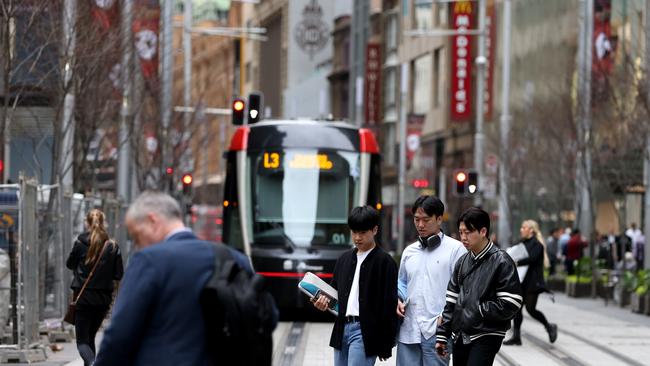Union demands on zero unemployment would blow up the economy
Union demands that the RBA target a zero rate of unemployment would ‘blow up the economy’, leading economists say.

Union demands that the Reserve Bank target a zero rate of unemployment would “blow up the economy” and return Australia to the damaging boom and bust cycles that plagued the 1970s and ‘80s, some economists say.
As workers’ representatives rail against RBA deputy governor Michele Bullock’s declaration that “unemployment will have to rise” to bring inflation to heel, Victorian Premier Daniel Andrews on Wednesday said he wanted to drive the jobless rate further down even as the central bank hikes interest rates to slow demand.
Responding to a second day of criticism after the shock cancellation of the 2026 Commonwealth Games, Mr Andrews emphasised his government was committed to a $2bn package for regional Victoria, including a raft of infrastructure investments and a newly announced $130m worker accommodation fund.
“At 3.1 per cent unemployment rate, this is the lowest it’s been on record, but we want it to be lower,” he said, misquoting Victoria’s latest jobless figure of 3.7 per cent, according to the Australian Bureau of Statistics, which is above the 3.2 per cent recorded in July 2022. “We want more jobs, we want more visitors.”
As Victoria’s Labor leader committed to drive unemployment down, the Albanese government has refused to criticise Ms Bullock’s estimate that a jobless measure of 4.5 per cent – versus a current national rate of 3.6 per cent – was consistent with achieving the 2-3 per cent inflation target by 2025.
Having announced Ms Bullock as governor Philip Lowe’s replacement when his term ends in mid-September, Jim Chalmers will turn his attention to finalising an updated Statement on the Conduct of Monetary Policy, and will likely seek to amplify the goal of achieving full employment, while keeping in place the existing inflation target.
Australian Workers Union secretary Paul Farrow has said the RBA should redefine full employment in the statement as being “understood as zero involuntary unemployment”.
The ACTU has said the government’s employment white paper, due to be released in September, “must make true full employment an explicit macroeconomic goal in the form of zero involuntary unemployment”.
NAB chief economist Alan Oster said it was impractical to achieve zero unemployment as there would always be some Australians nominally looking for work who, for example, were unwilling to relocate to get a job, or did not have the right skills for the available jobs.
He said fiscal and monetary policy decisions could drive the jobless rate to virtually zero, such as through job guarantees and ultra-loose monetary policy, but “you would generate so much wages pressure that you would blow up the economy”.
“My basic approach in economics is when you are trying to get from A to B, you can do it slowly and steadily or you can go by boom and bust.
“What we know from economics is that if you go slowly, you can get there quicker, and that was certainly the experience of the ’70s and ’80s,” Mr Oster said.
University of Melbourne professor Jeff Borland said targeting zero unemployment was “infeasible … You are never going to get there because of frictional and structural employment. If you did you are going to get massive wage inflation.
“The idea of a positive (above zero) full employment rate of unemployment exists for exactly those reasons,” he said.
“My beef is around what that rate is,” he said, arguing that recent history – including during the mining boom – showed it was entirely possible for unemployment to be between 3.5 and 4 per cent without triggering unsustainable wage pressures.
Independent economist Saul Eslake said a zero unemployment rate would be “in practice almost impossible to achieve” and even if it were attainable, it would come with a “higher than tolerable and volatile inflation rate”.
Mr Eslake said he did not know of any country that had successfully done so.
“Even in Japan, which has historically low unemployment, the best they have been able to do is around 2 per cent,” he said.
Labor’s draft party platform for next month’s national conference says “Labor is committed to achieving full employment” and that the party “believes that any person who wants to work should have the opportunity to work”.







To join the conversation, please log in. Don't have an account? Register
Join the conversation, you are commenting as Logout